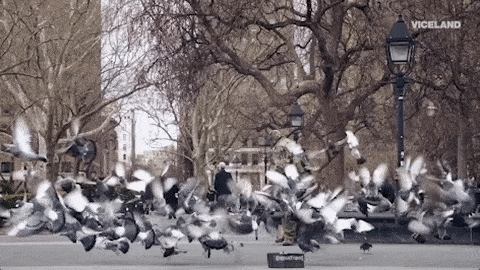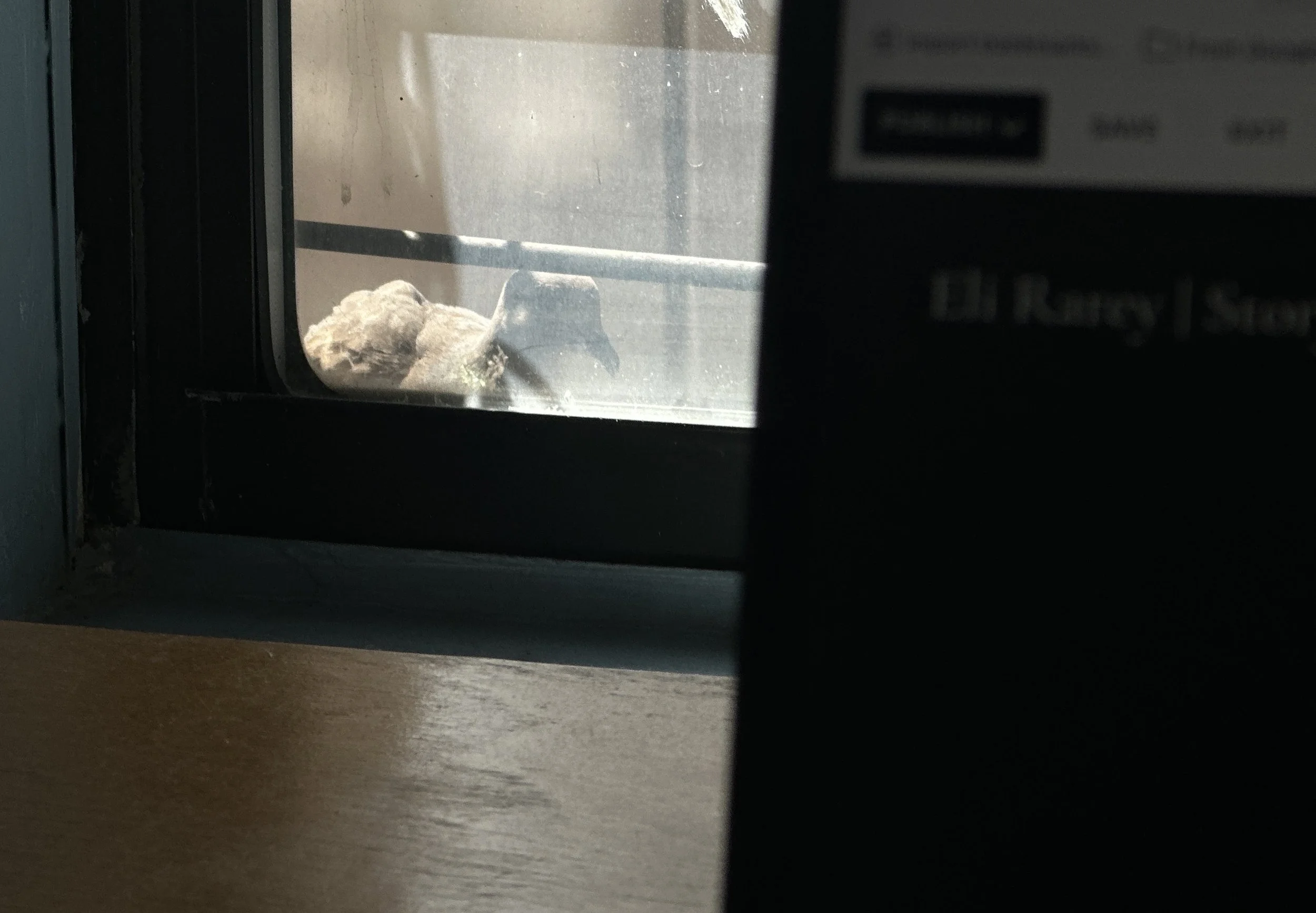First, connect
Earlier this week, in the middle of a heat wave, a pigeon built a nest on the windowsill outside my office window. This window is directly behind my desk. When I’m on a zoom call, I can see her directly behind my laptop. She is about eighteen inches past the screen, watching me too. Probably making sure I don’t get too close to her and her eggs.
I am completely obsessed with the bird outside my window. I could watch her all day. I kind of do! I can’t explain why it’s so exciting to me, but I feel like I won the lottery. It makes me happy every time I look at her.
It would be easy, when I’m on professional calls, to be distracted by my new bird friend. To look at her and let my mind drift away from “work.” I could get caught in that struggle — do I give my attention to the work-person on the screen? Or do I let myself be swept away by my true love, the pigeon?
I refuse to engage in this nonsense. Instead, I immediately tell whoever I’m talking to about the bird. I turn my laptop around and point the camera at her. The pigeon usually looks at the screen too — I don’t know if she can tell that it is another primate admiring her, but she definitely notices whenever I move the laptop because it’s very close to her nest. Let’s be honest, I love her but she probably finds me troubling, even menacing. I would give her some bread or something, as a peace offering, but then I would have to open the window. Which would terrify her even more!
I share all this drama, which truly consumes my thoughts, with whoever I am inviting into my space on zoom. Why wouldn’t I? Let’s say that they are not as excited about the pigeon as I am — this is certainly possible. At the very least, they are learning a little bit about me, about what kind of person I am. I’m someone who gets really excited about getting a pigeon as an office mate. I’m sharing something authentic about myself.
Why are we afraid to do this at work? Why do we think that we will be more effective if we leave our humanity at the office door?
I see this all the time with presentations. Many people have been told, perhaps in a presentation skills workshop, that they need a “hook” in the first 15 seconds of their presentation, or they will lose the audience’s interest. This is good advice. First, connect. Then you can get into the rest of what you have to offer.
The student of the presentation skills workshop dutifully inserts something that is supposed to serve this function. Usually this bit has some relevance to the topic of the presentation. A funny anecdote. A surprising statistic. A historical fact. A celebrity quote.
These are all considered good options for a “hook” — but do they actually reveal anything about you? About what excites and obsesses you? What brings you joy? What terrifies you?
We need to understand the actual purpose of offering something at the opening of a presentation to catch your listeners attention. Calling it a “hook” implies that they want to escape, and somehow this anecdote will prevent this. But the only reason they would want to escape is because what you have to say doesn’t matter to them, and their minds are filled with things that matter to them very much. Things that obsess and excite them. Things that bring them joy, that terrify them. We know this is true, because they are human. We need to connect to them on this level, first. You must confirm, for them, that you are also human. That you recognize the shared humanity in the room.
One of the things about being human is that we all have limited time to be alive, and we would all like to spend that limited time doing things that are important to us. This is the reason that boring presentations make us feel like we are literally dying. Because we are definitely going to die someday, and we would like to spend this precious time being alive doing anything else other than listening to this presentation.
But — if you offer something that actually excites you, that actually touches your human passion, then as humans we will respond. We will take on your passion as if it is our own, for a short time at least. We will want to know more.
This is the same thing that happens when we hear a good story, watch a great film, see a captivating play. We identify for a moment with someone else’s desires and troubles — and we come back to our own lives thoughtfully enriched. Storytelling is not entertainment, it is an essential part of connecting with people. Only story allows you to communicate in a memorable way, to influence decisions, and to make an impact on how people see the world. Without storytelling none of this is possible.
If I was giving a webinar, could I use my pigeon as a so-called hook? I certainly could, but I love her so much that I hate to even use that language to talk about her. She is not a hook! She is my new beloved friend.
From now on, when I’m trying to construct a winning anecdote to connect with the audience at the beginning of a presentation, I will refer to it as “the pigeon,” not the hook. And if I don’t find it as genuinely exciting as the pigeon outside my window, I will assume that my audience won’t either. And they will let their minds wander off to whatever obsessions or worries lie eighteen inches beyond their laptop screens.
Don’t worry about whether the way you connect is relevant to the content you have to present — worry about whether the content you have to present is as compelling to you as the pigeon. The most memorable thing about your presentation isn’t what you have to say. It’s you. People are interested in you — or they will be, if you let them see something of who you are.


